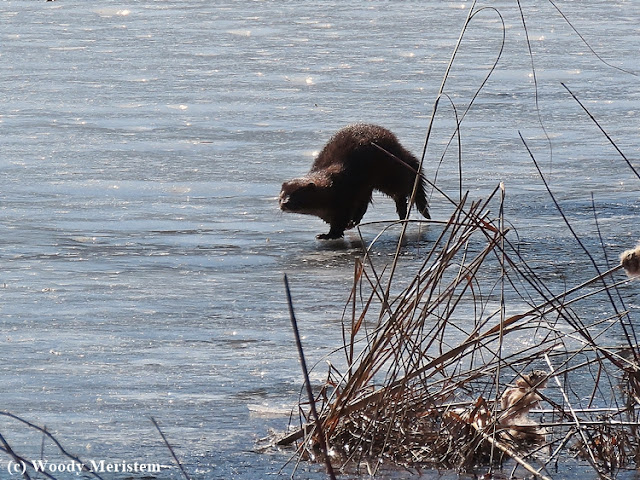A township road borders a small stream; across the stream from the road is a wooded slope that blends into an abandoned pasture. Vehicles traveling the road often strike wildlife – as do vehicles on other roads throughout the land. Two years ago a raccoon had been hit on the road and got across the stream before it died; the mammals and birds that fed on the remains were the subject of this post. The road, in addition to bordering the small stream, borders property that belongs to friends of ours.
Bill called to say that their two dogs had found a dead deer in their woods. Ah-ha says I, here’s another opportunity for a camera trap. So the next day I placed one of my camera traps to capture videos of whatever came to dine.
Judging from the multitude of half-melted tracks around the snow-covered body, and since the carcass had already been opened, the deer had probably been dead for at least a few days. Without a necropsy* it was impossible to determine the cause of death, but it’s almost certain that the doe had been struck by a vehicle and managed to get across the stream and partway up the hill before she died.
The doe’s body has been feeding a variety of wildlife –
Raccoons were the principle diners; in the first several weeks there were hundreds of videos of them as they stripped most of the flesh from the carcass. Raccoons continued to feed on the carcass throughout the time these videos were taken – but you certainly don't want to watch more than 875 videos of raccoons munching away.
The camera trap will remain to catch videos of those that come to eat, although the pickings will be slim now that almost all of the flesh has been consumed. And the camera trap won’t catch the many insects, other invertebrates, bacteria, fungi and different microscopic beings that will feast on what remains of the deer and recycle the nutrients of this formerly living being. Where would the world be without scavengers and decomposers?
* an autopsy performed on an animal








































